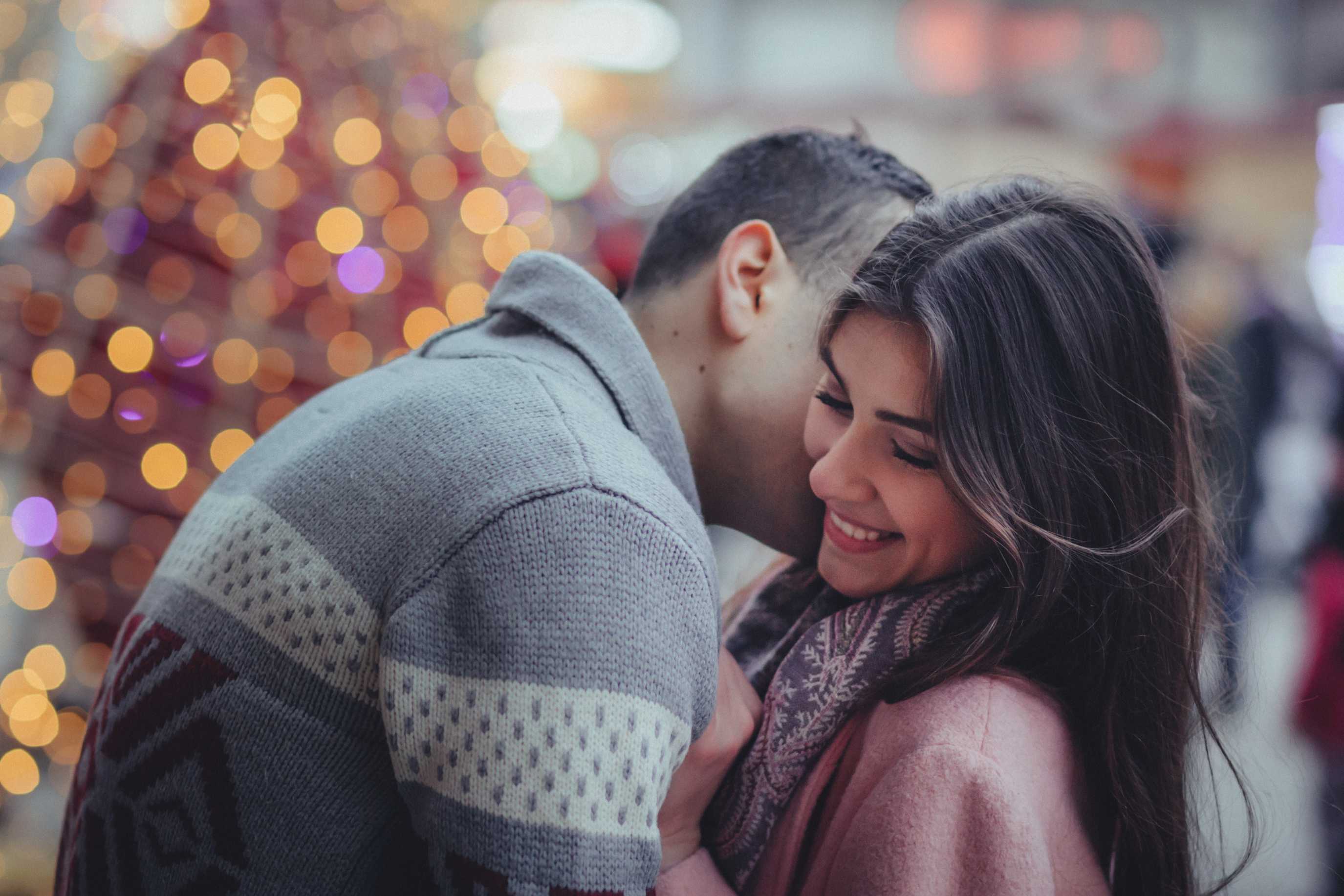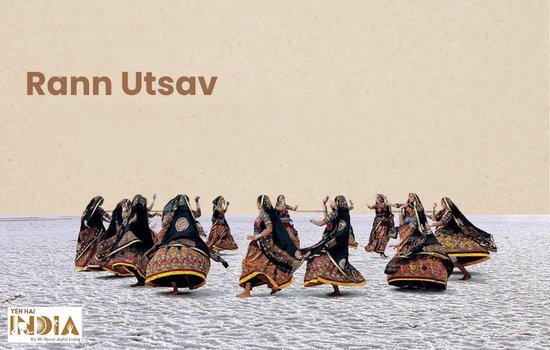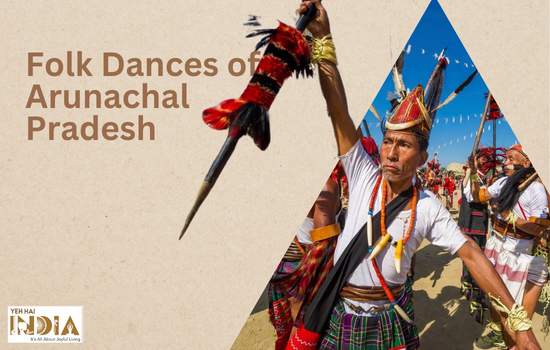Navaratri is one of the most important Hindu festivals which is celebrated every year in the season of autumn and spans for nine nights. Navaratri in Sanskrit means ‘nine nights’ – Nava (nine) and Ratri (nights). It is observed in various parts of the country with respective and different reasons and is celebrated accordingly.
There are four seasonal Navaratri theoretically though the post-monsoon autumn festival called Sharada Navaratri is practiced and observed across the country.
According to few Hindu texts such as the Shakta and Vaishnava Puranas the festival of Navaratri falls twice or four times in a year. Out of these, the most celebrated, as already mentioned is the Sharada Navaratri near autumn (September – October) and the Vasanta Navaratri near spring (March – April) is the most significant to the culture and celebrated by the Hindus in the Indian sub-continent.
The other two Navratri observed individually or regionally are Magha Navaratri will falls in the winter (January – February) and is observed as Vasant Panchami and Ashada Navaratri a the start of the monsoon (June – July).
Though the only similarity all of these have is that Navaratri falls in the bright half of the Hindu lunisolar months.
Navaratri – Significance of Each Day

This particular festival is associated with the battle which took place between Goddess Durga and demon Mahishasura and the celebration of the triumph of good over bad. The nine days that follows are solely dedicated to the nine avatars of Goddess Durga and each day presents an incarnation of the goddess.
Recommended Story – Durga Puja Festival: A celebration of Good Over Evil!
Day 1 – Shailaputri
The first day known as ‘Pratipada’ and is associated with Shailaputri (daughter of mountain), an incarnation of Parvati. The Goddess is worshipped as a companion or a consort to Lord Shiva. She is depicted as riding the bull with trishula in her right hand and a lotus in her left hand. The colour of the day is ‘Red’ and depicts vigour and anger.
Day 2 – Brahmacharini
On day 2 known as ‘Dwitiya’, another incarnation of Parvati which is Goddess Brahmacharini is worshipped. In this form, Parvati became sati which means, her unmarried self. Brahmacharini is worship for moksha and for the foundation of peace and prosperity.
She is depicted walking bare feet while holding ‘Japamala’ and ‘Kamandal’ in her hands symbolizing bliss and peace. The colour of the day is ‘Blue’ which depicts tranquillity yet energy.
Day 3 – Chandraghanta
Chandraghanta is worshipped on day 3 known as ‘Trititya’. The name is derived from Parvati adorning her forehead with an ‘ardhachandra’ which means a half-moon after marrying Lord Shiva. She is the symbol of beauty and bravery.
The colour of the day is ‘Yellow’, a vivacious colour but can still light up everyone’s mood.
Day 4 – Kushmanda
On Chaturthi, Goddess Kushmanda is worshipped and is believed to be the creative power of the universe. Kushmanda is associated with the vegetation on Earth. She is depicted having eight arms and sitting on a tiger. The colour of the day is ‘Green’ showcasing her association with the vegetation and nature.
Day 5 – Skandamata
Worshipped on Panchami is Skandamata who is the mother of Kartikeya (Skanda). She is depicted riding on a ferocious lion, having four arms and holding her baby. The colour of the day is ‘Grey’ symbolising the transforming strength of the mother when her child is surrounded or confronted with danger.
Day 6 – Katyayani
An incarnation of Durga, born to sage ‘Katyayana’, she is a form of Maha Lakshmi. She is known to exhibit courage and is known as a warrior goddess who is one of the most violent forms of Devi. She is depicted as riding a lion with four hands. The colour of the day is ‘Orange’.
Day 7 – Kalaratri
Worshipped on Saptami is the most ferocious form of Durga – Kalaratri. It is believed that Parvati shed her fair skin in order to fight and kill the demons Sumbha and Nisumbha. The depiction is of Goddess appearing in white colour attire and a rage in her fiery eyes and her skin turns black.
The colour of the day is ‘White’ that portrays peace and prayers to the Goddess so that she protects her devotees from any harm.
Day 8 – Mahagauri
Symbolizing intelligence and peace is Mahagauri. The colour of the day is ‘Pink’ which showcases optimism.
Day 9 – Sidhidatri
The last day known as Navami, devotees pray to ‘Siddhidhatri’. She is depicted sitting on a lotus bestowing and possessing all types of Siddhis and has four days. She is also known as ‘SriLakshmi Devi’. The colour of the day is ‘Light Blue’ which portrays admiration towards her beauty.
Regional Practices
Each state or a region has their own observed beliefs and way of celebrating Navaratri throughout the country. Where some fast, others celebrate with a rich feast. Some revere the Mother Goddess but different aspects of her while others revere the avatars of Vishnu, particularly of Rama.
Culmination of ‘Chaitra Navaratri’ takes place in ‘Rama Navami’ on the ninth day and the ‘Sharada Navaratri’ culminates in Durga Puja and Dussehra.
Also Read – Hornbill Festival of Nagaland
Navaratri in North India
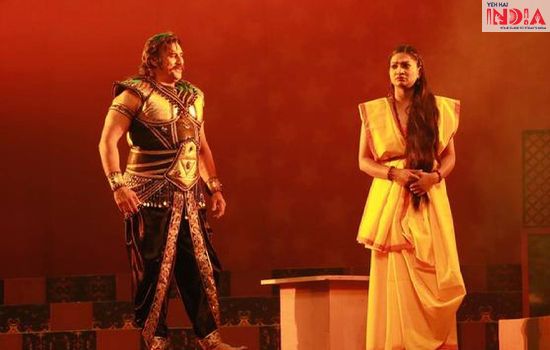
In North India Navaratri is marked by numerous Ramlila events which showcase episodes from Rama and Ravana portrayed by a team of artists performing in various rural and urban centres either inside temples or in temporarily constructed stages.
The dramas are organized and conducted by various communities in smallest of the village and town areas. In many parts, the villagers and audience join in to participate spontaneously helping the artists with either stage set up or other related aspects.
Navaratri has been a prominent ritual historically for kings and military of the kingdoms. Dussehra comes at the end of the Navaratri where the statues of Ravana, Kumbhakarna, and Meghananda are burnt in celebration of the victory of good (Rama) over evil and bad on Vijayadashmi.
Navaratri in Eastern India, West Bengal and Nepal
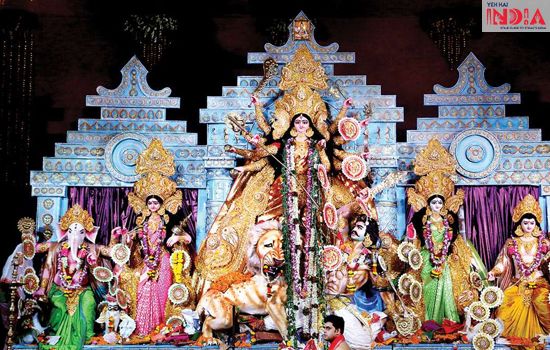
Navaratri is celebrated as Durga Puja in the Eastern India, West Bengal and Nepal and is witnessed as the important annual festival to Bengali Hindus and a major social event in the Eastern and North-Eastern parts of the country.
This occasion is celebrated by arranging thousands of ‘Pandals’ by various communities in various community squares, roadside shrines and major Durga Temples in West Bengal, Odisha, Jharkhand, Assam, and Tripura and nearby regions.
Durga Puja marks the battle between Goddess Durga and shape-shifting demon Mahishasura and how she emerged with victory. The festival begins with ‘Mahalaya’ where Shakta Hindus remember the loved ones who died, as well as the arrival of the warrior Goddess Durga.
The next significant day is the sixth day called ‘Shashthi’ where local communities welcome goddess Durga and the celebrations are inaugurated. The next three days are along with Lakshmi, Saraswati, Ganesha, and Kartikeya are revered and the main Puja is marked on these days with recitation of scriptures.
On the day of Vijayadashmi, the procession is held where the clay statues are ceremoniously walked in a river for a goodbye to Durga. Emotional songs are sung by the devotees and after the possession is completed, sweets and gifts are are presented to friends and families.
Navaratri in Bihar
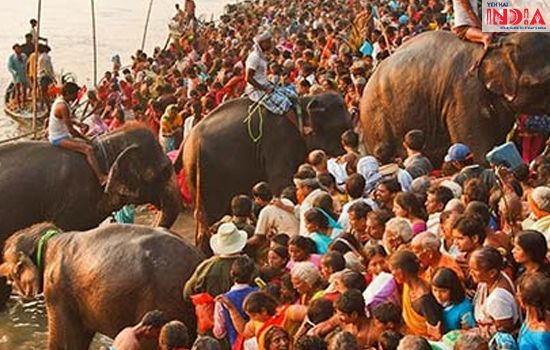
In parts of the Bihar, Durga Devi is welcomed in the autumn season though in other parts such as Sitamarhi which is closer to the Nepal border, the Spring Navaratri is the main attraction where a large Ramnavami fair is organised which marks the birth of Lord Rama as well as admiration for his wife Sita.
This is the largest cattle trading fair that attract large handicraft market. Celebrations and performances are held at the local Hindu temple dedicated to Sita, Durga, Hanuman, and Ganesha.
Navaratri in Gujarat
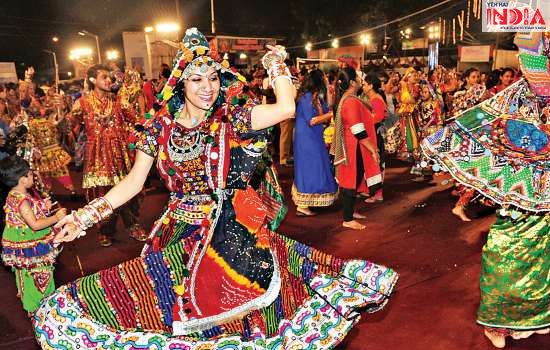
One of the main festivals of Gujarat is Navaratri and the traditional celebrations include fasting for a day or partially for nine days in remembrance of one of the nine aspects of Shakti Goddess.
The prayers are dedicated to a symbolic pot called ‘Garbo’ in remembrance of the womb of the family and the universe. The clay pot is lit and and is represented as ‘Atman’ (self, soul).
The nine days are filled with festive celebrations and performing arts across the state. The most significant dance form is ‘Garba’ which is accompanied by a live orchestra or devotional songs. The people from different backgrounds create circles and perform by clapping and dancing which shrinks or grows in size depending on the number of people.
The dance even deploys ‘Dandiya’ with coordinated movements and the dandiya sticks striking between the dancers. Post dancing, the whole audience gathers together to socialize and feast.
Navaratri in Goa

On the first day of the Hindu month of Ashwin, the temples in Goa install a copper pitcher which is surrounded by clay and has nine varieties of food gains placed inside the sanctum sanctorum of Devi and Krishna temples.
The celebrations include placing the goddess on a silver swing which is highly decorated and for the next nine nights, she is swung on the tunes of temple music, devotees singing kirtans and waving of lamps. It is called Makharotsav.
Navaratri in Karnataka

Navaratri in Karnataka is observed at homes, lighting of the temples, cultural sights, and regal processions. Locally called ‘Dasara’, it is the state’s festival. The seventh day witnesses Saraswati Puja where books of ancient traditions and children’s books are kept. These booked are then worshipped and read on the 10th day of Vijayadashmi.
Ayudha Puja on ninth day is dedicated to Goddess Saraswati where military personnel’s upkeep their weapons and families keep their tools of livelihood and offer prayers to Saraswati, Parvati, and Lakshmi.
Navaratri in Kerala

Vijayadashmi is considered auspicious for initiating children to start reading and writing and it is called ‘Vidyarambham’. The day tradition starts with the baby sitting on the lap of an elder person such as the grandfather, near the images of Saraswati and Ganesha.
The elder then writes a letter and the child follows to write the same letter with his/her index finger. The ritual’s popularity made even Christians adopt the same and the ritual is now observed in Churches as well.
Navaratri in Maharashtra

The common celebrations begin on the first day of the Navratri with ‘sthapana of a ghat’ called as ‘Ghatasthapana’ meaning ‘mounting of a jar’. The rural households mount a copper or brass jar which is filled with water and is place on a heap of rice kept on a wooden stool. A lamp is lighted which is the symbol of knowledge and household prosperity.
For the nine days, the family worships the pot and offer ritual and garlands of flowers, leaves, fruits, dry fruits, etc. On the eighth day, a ‘Yajna’ is performed in the name of Goddess Durga. The ninth day observes Ghat Puja where the Ghat is dismantled. Khande Navami marks the worshipping of tools, weapons, vehicles, and productive instruments by the men of the family.
Navaratri in Tamil Nadu
Each home is decorated during the festival of Navaratri in Tamil Nadu. Tamil people keep ‘Golu’ (God, Goddesses, animals, birds in miniature forms) which displays beautiful Golu dolls with puranic backgrounds. The daily poojas takes place with different offerings such as food, flower decorations, etc. The devotional songs are sung along with reading of Puranam and traditional prayers.
The ninth day witnesses ‘Ayudha Poojai’ and ‘Saraswati Poojai’ and ‘Vijayadashmi’ is celebrated in full swing on the tenth day observed as the victory day and the end of Golu. The temples are also completely illuminated and decorated with ceremonial lamps and Vedic chants are performed.
In temples, Navaratri is celebrated for Devi’s dwelling in each of these temples.
Navaratri in Telangana
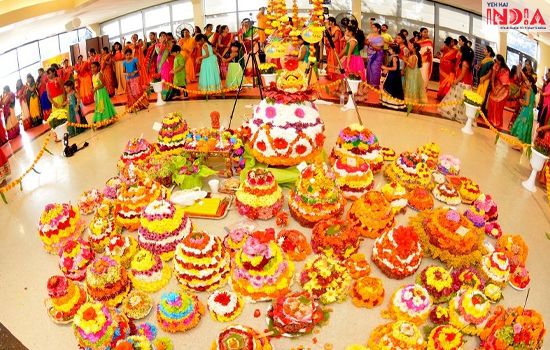
During Navaratri, the Telangana tradition involves Telegu Hindu women producing ‘Bathukamma’ for Navaratri goddesses. It is an artistic flower decorations driven event which uses ‘Marigold’ particularly, which reveres the three aspects of Devi called as ‘Tridevi’.
The celebrations goes for nine days with women whirling around Bathukamma clapping with recitation of Ramayana, stories of Shiva, Gowri and the common day to day life of the women in rhythmic songs. Every night, Bathukamma is immersed in near water bodies and a new Bathukamma is made the next day.
The festivities come to an end after the completion of nine nights, where Goddess Durga is worshipped in the form of Maha Gowri.
Other Religions – Navaratri
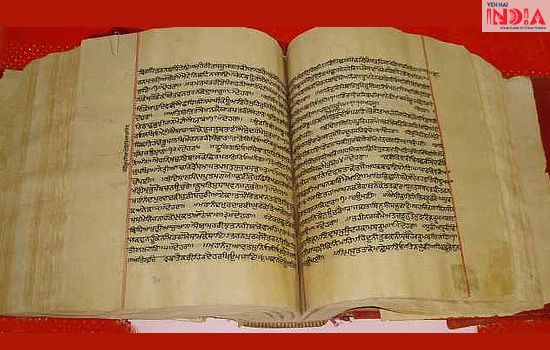
In Sikhism literature, particularly in the ‘Dasam Granth’ attributed to Guru Gobind Singh, the Navaratri and goddess worship is mentioned. In fact, the second Guru of Sikhism, Guru Angad was a devotee of Goddess Durga.
Jains have observed the cultural celebrations of Navaratri, such as the folk dances.
Navaratri 2020
Navaratri in India will begin on 17 October and will end on 25 October.
Also Read – Celebrate Eco-friendly Ganesh Chaturthi amid the Crisis: Know the Why & How







